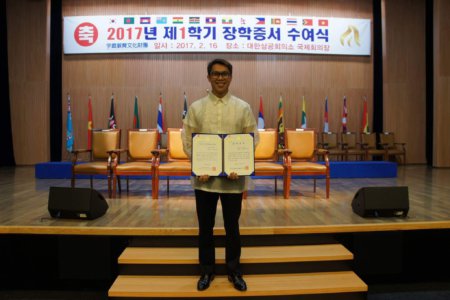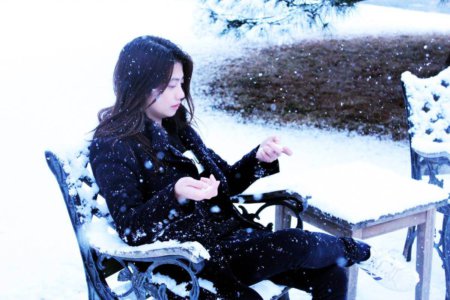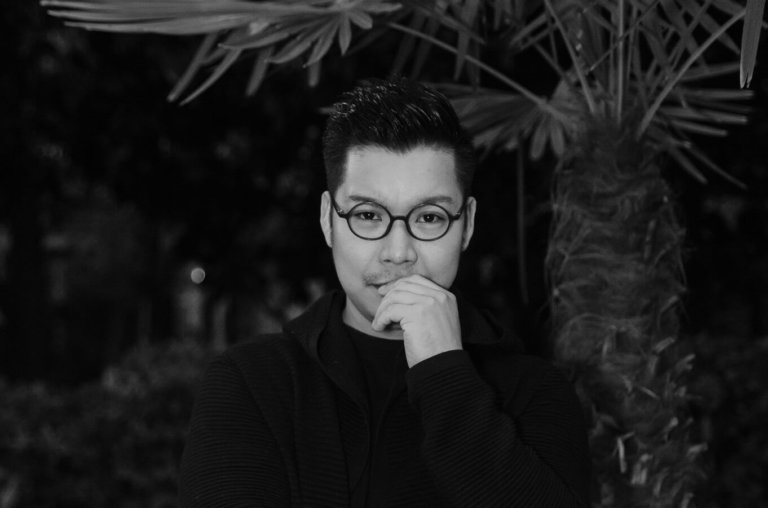
For Lionell Christian Lanuzo, studying in Italy was no small feat. For the Pinoy student, getting a diploma in industrial chemistry from Istituto Tecnico Industriale Ettore Molinare in Milan and furthering his love for fashion paid off massively. Among the many reasons that this country is considered a mecca for international students are affordability, culture and cuisine, and academic offerings. Lanuzo got to sample them all.
Since graduating, he’s been making waves in the fashion world and making the Philippines proud. The “Bayanihan (communal unity) spirit of all Pinoys” shines within Lanuzo as San Fernando, Pampanga native wowed the European audience at the “Lange Nacht der Konsulate” (Long Night of the Consulates) in Stuttgart, Germany with creations made of “capiz” (natural seashells), “sigay” (another type of shell), paper foils, “barongs” (type of dress) with beads and pearls.
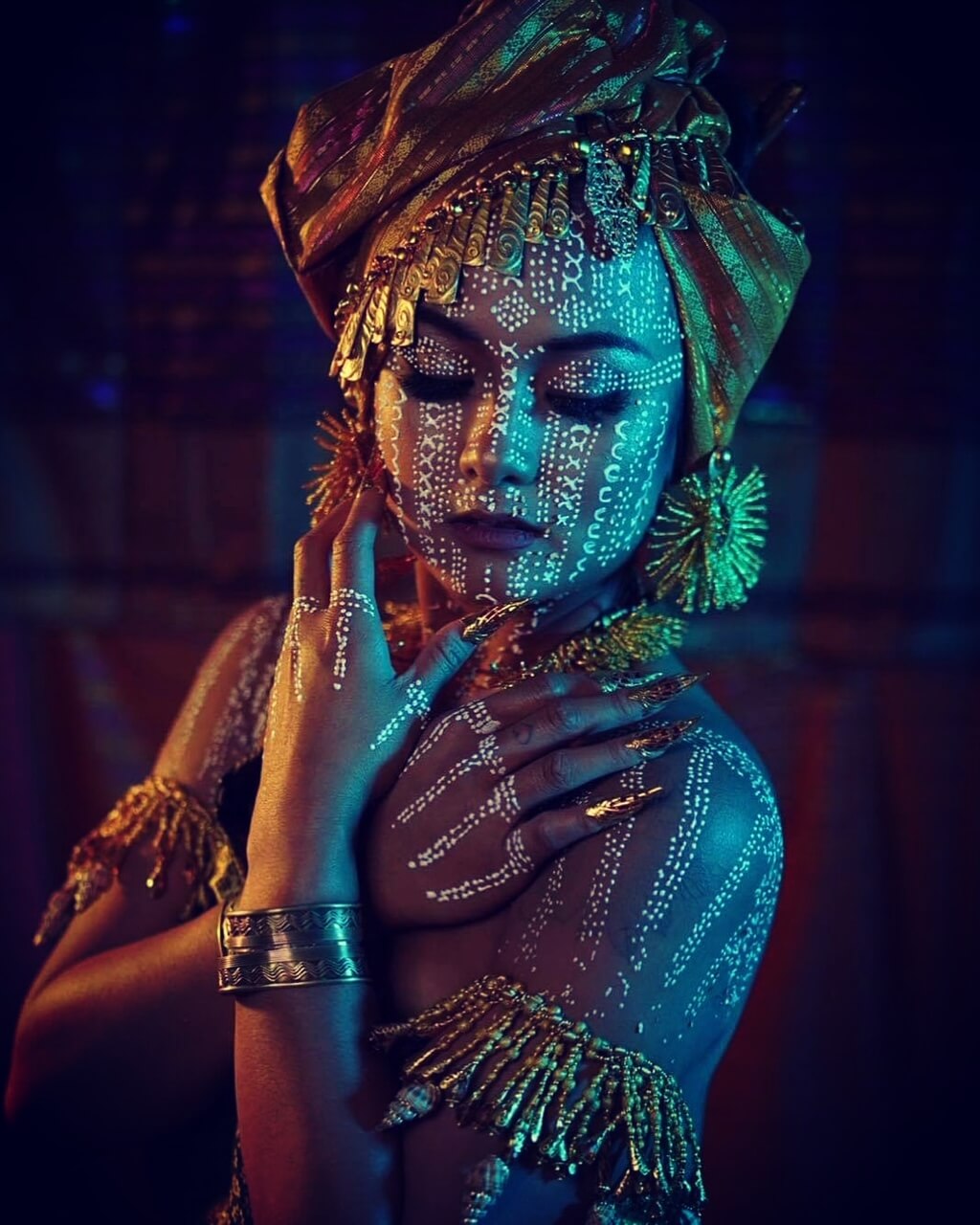
Lanuzo worked with the Philippine Consulate General in Frankfurt this year in April. Source: Lionell Christian Lanuzo
He also collaborated with the Philippine Consulate General in Frankfurt this year in April. This was through a virtual exhibit called “GOLDEN TREASURES: Culture, Art and Tradition of Our Filipino Ancestors” to commemorate the 500th anniversary of the Victory at Mactan and the 500th anniversary of the Philippine part in the first circumnavigation of the world.
Below we dive into what drove him to chemical engineering, why he pivoted to fashion design and what studying in Italy is like:
Where does your interest in industrial chemistry and fashion stem from?
I love science and I love to draw. I chose to get my diploma in “Chimica Industriale” (industrial chemistry) because of its intricacy and complexity. Perhaps that’s also why I chose to venture into fashion design.

The “Bayanihan (communal unity) spirit of all Pinoys” shines in Lanuzo’s creations. Source: Lionell Christian Lanuzo
Just like industrial chemistry, I like to know the materials I’m working with. I see its composition and from there, create something out of those materials. Studying chemistry also made me able to understand patterns and flow of every design I do. It’s weird connecting fashion through chemistry, but that’s how it is for me.
Why choose Milan to study?
It wasn’t my first choice, but I guess through certain circumstances I ended up here. Back in the Philippines where I finished high school was when my parents decided to petition me to study in Italy.
It wasn’t easy transferring from one country to the other especially with the language barrier and cultural difference so it was all a shock to me. Eventually, I was able to cope and finish my studies.
After studying in Italy, tell us a bit more about your career trajectory.
Truth is, I wasn’t really able to practice what I studied. After I graduated, I started working as a receptionist in a hotel just to do something while waiting for some companies to reply to my applications.
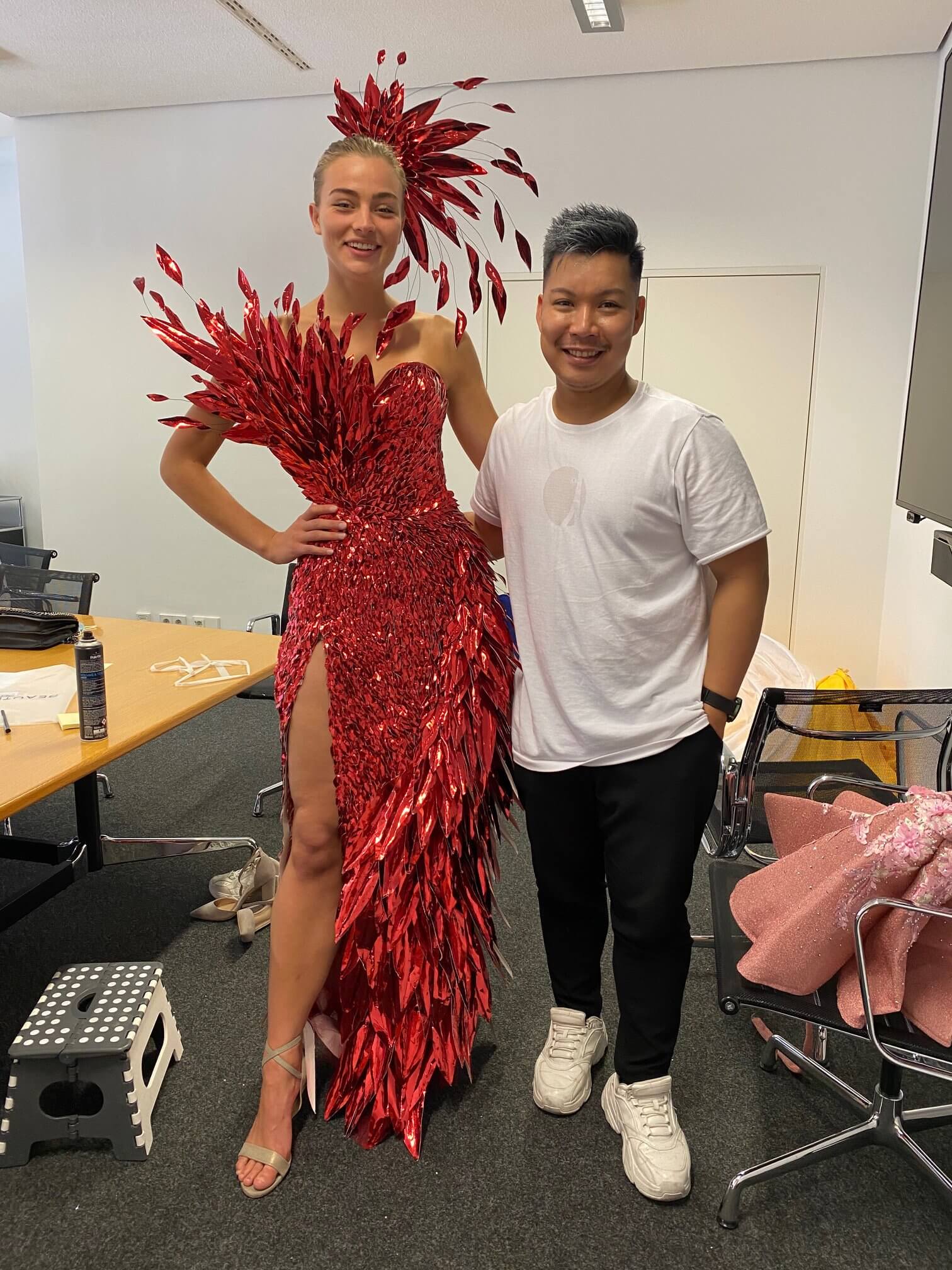
Through a small shed outside the design room in Germany, Lanuzo managed to set up his beautiful creations which led the stage director to be in awe. Source: Lionell Christian Lanuzo
After a six-month probation period, they gave me an indefinite contract and I’ve been working with them for almost 11 years. Usually, I get asked why I waste time being just a receptionist when I can get a better job but I’m happy with what I do. I get to meet a lot of people and at the same time having a supportive boss with me venturing in design has been great.
Walk us through your favourite shows and where the inspiration behind them came from.
Having only been in design for less than four years now, I’ve been lucky enough to do some shows and travel a lot but there are two that stand out the most. One was when I won Best Designer in the multi-ethnic competition in November back in 2018 where I had the chance to represent my country.
I was questioning my ability all the time back then because I had a tough competition with 10 other countries and I also did not have any formal education in fashion design. To further add, the participating designers already had their own businesses, shops and boutiques which is a world of experience I did not.
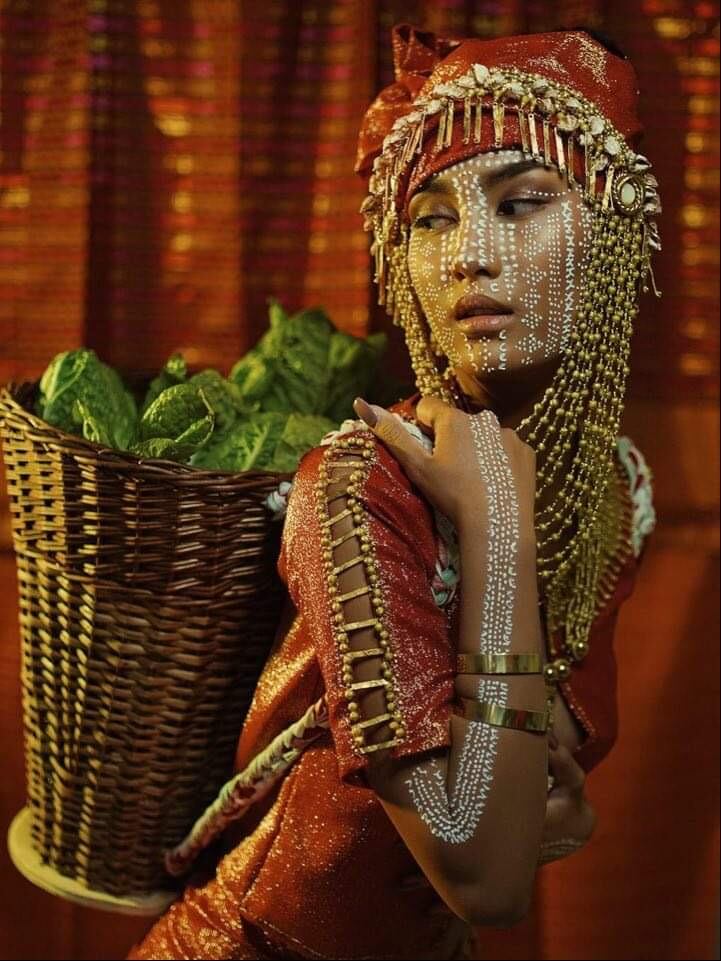
“GOLDEN TREASURES: Culture, Art and Tradition of Our Filipino Ancestors” virtual exhibit. Source: Lionell Christian Lanuzo
My team was denied a space in the area for design so we took everything to a shed outside the main hall and prepared everything there. I think it was a blessing in disguise because one of my creations has a five-foot long trail and the other one is delicate and fragile. So when the stage director told us we had less than five minutes, all of the models and designers went out to where my team already were.
The stage director saw my model and asked what material I used and where I studied fashion. From there, I noticed the vibe change from unfriendly to a more curious one. Eventually, our team bagged the Best Model and the Best Designer awards. This experience truly made me realise my passion for fashion design.
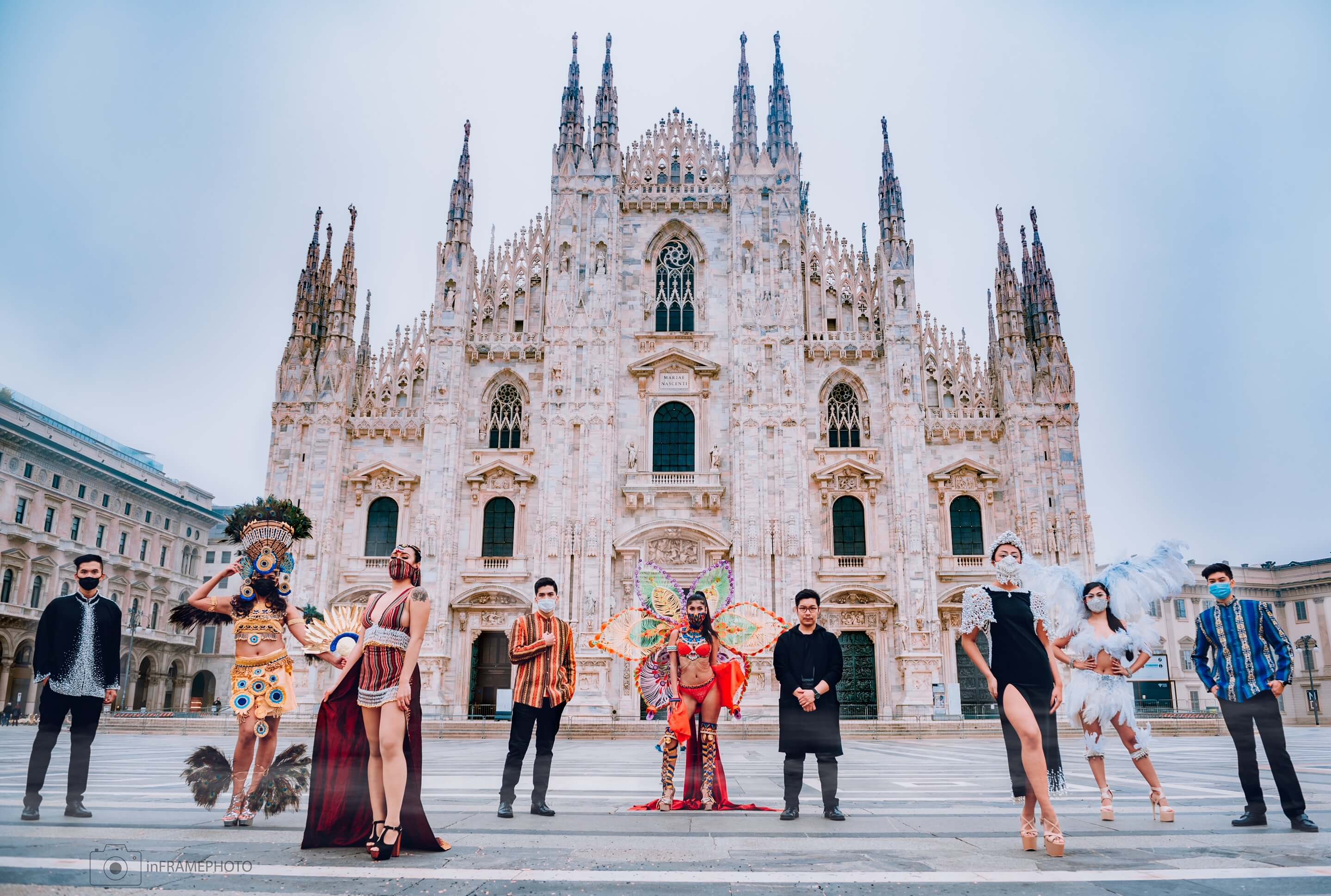
“Just like industrial chemistry, I like to know the materials I’m working with,” he says. Source: Lionell Christian Lanuzo
Another great memory was last year I was chosen to represent the Philippines at the Long Night of the Consulates in Germany and I was able to do a two-set fashion show during the event. Most of my designs depict my roots as a Filipino artist, from the materials up to the weaves and fabrics.
The show was a total success and featured on different news outlets and online publications. It was a proud moment for me to be able to sustain my craft throughout the years, still evolve and realise that I have much to learn and offer. I think this was an “aha!” moment in my career.
When you were studying in Italy, what were the practical learning elements? Do you get to apply them to what you do now?
I know that it’s quite unorthodox to learn fashion design through chemical engineering. But for me, it helped a lot. In industrial chemistry we begin with getting to know our raw materials, assessing their composition, how they will react to other materials through a very systematic process, minimising excess materials and maximising their use.
Through studying chemistry, I also really learned to understand the meaning of precision and symmetry. Precision is something I apply using a precise flow of fabric and detail incorporated into my designs. With symmetry, the balance of comfort and style is important.
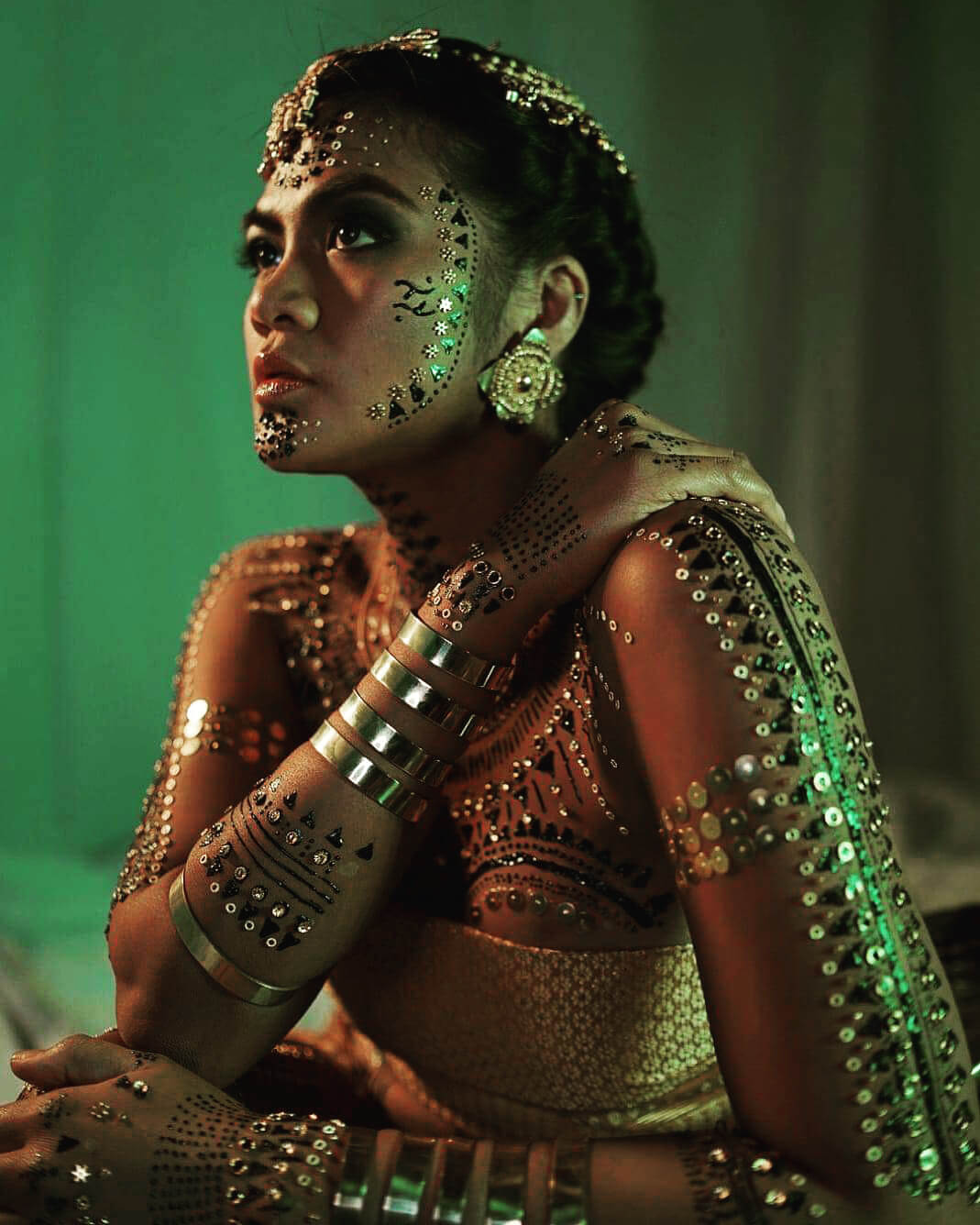
“After I graduated, I started working as a receptionist in a hotel just to do something while waiting for some companies to reply to my applications,” Lanuzo says. Source: Lionell Christian Lanuzo
What do you wish you learned more during your time studying?
The skills and knowledge in fashion design. Only now am I learning how to sew intricate designs and learn the names of every stitch, cut and fabric.
Do you have any advice for international students who want to study in Italy?
Know what your passion is and what you really want to do and become. Whatever hardship you might come across through your journey will turn into an opportunity to grow.
Besides figuring out how to pay tuition fees, you should look for accommodation. The government in Italy provides bonuses, money assistance and sometimes board and lodging options for students. If you love what you do, be passionate about learning and you will always find a way to resolve all your problems.
Where do you envision yourself in 10 years?
I never intended to venture into fashion. I was more focused on getting a normal office job and building my own business and having a family. I guess this turned out to be better than what I had in mind.
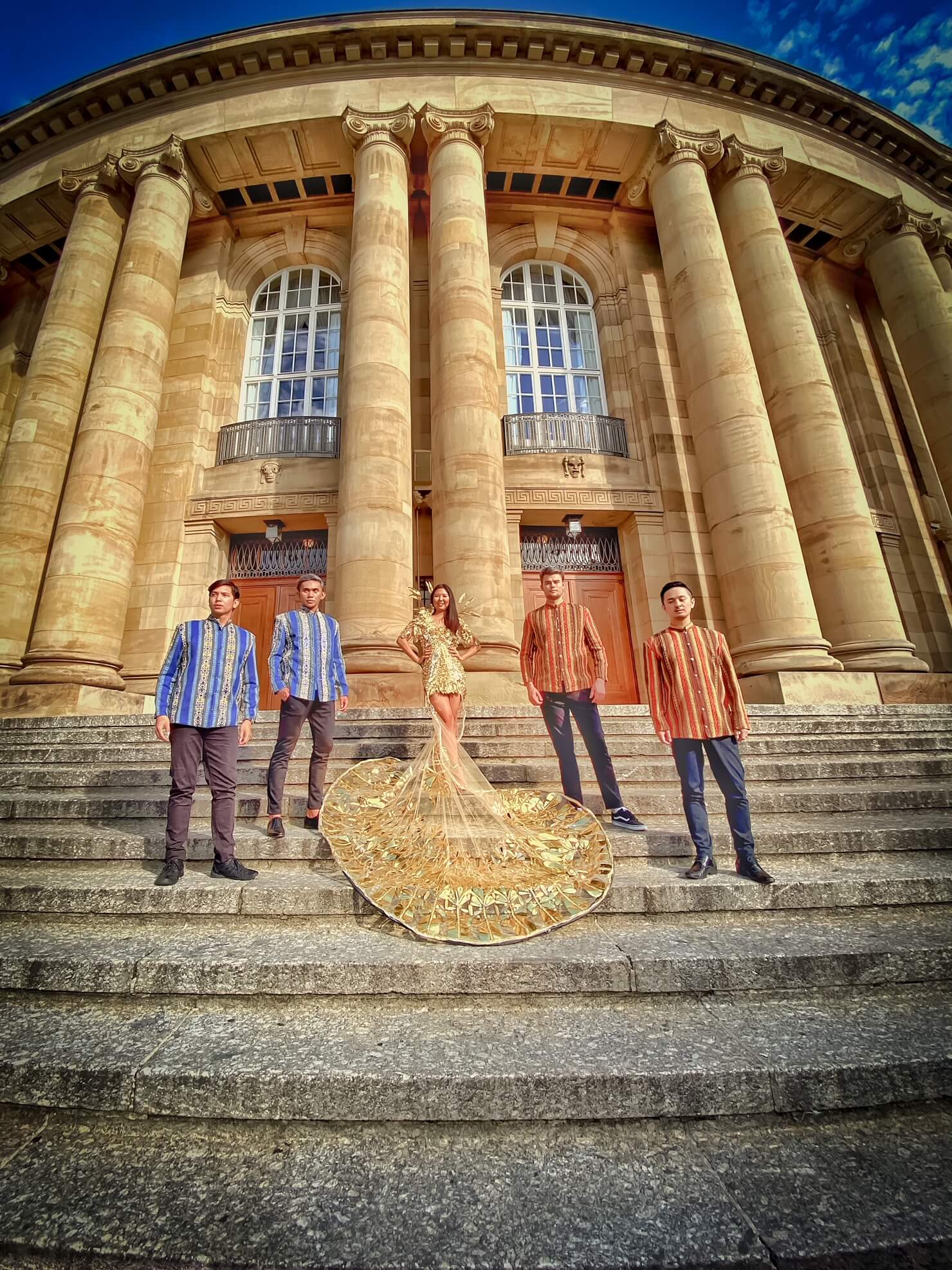
“Know what your passion is,” Lanuzo advises international students. Source: Lionell Christian Lanuzo
In a couple of years, I plan to open my own boutique in Milan and of course back home in the Philippines as well. I hope to make other creations and designs, teach upcoming designers what to do and share my experiences with them. Doing something that I love and at the same time make money out of it means it’s not really work, but a dream job made a reality.
What do you miss most from home and how do you substitute it?
I miss a lot of things! The cuisine, the all-year summer vibes, my relatives and friends. Thankfully there is a huge Filipino community along with restaurants that serve authentic cuisines here. This helps a lot when I crave something that reminds me of home.
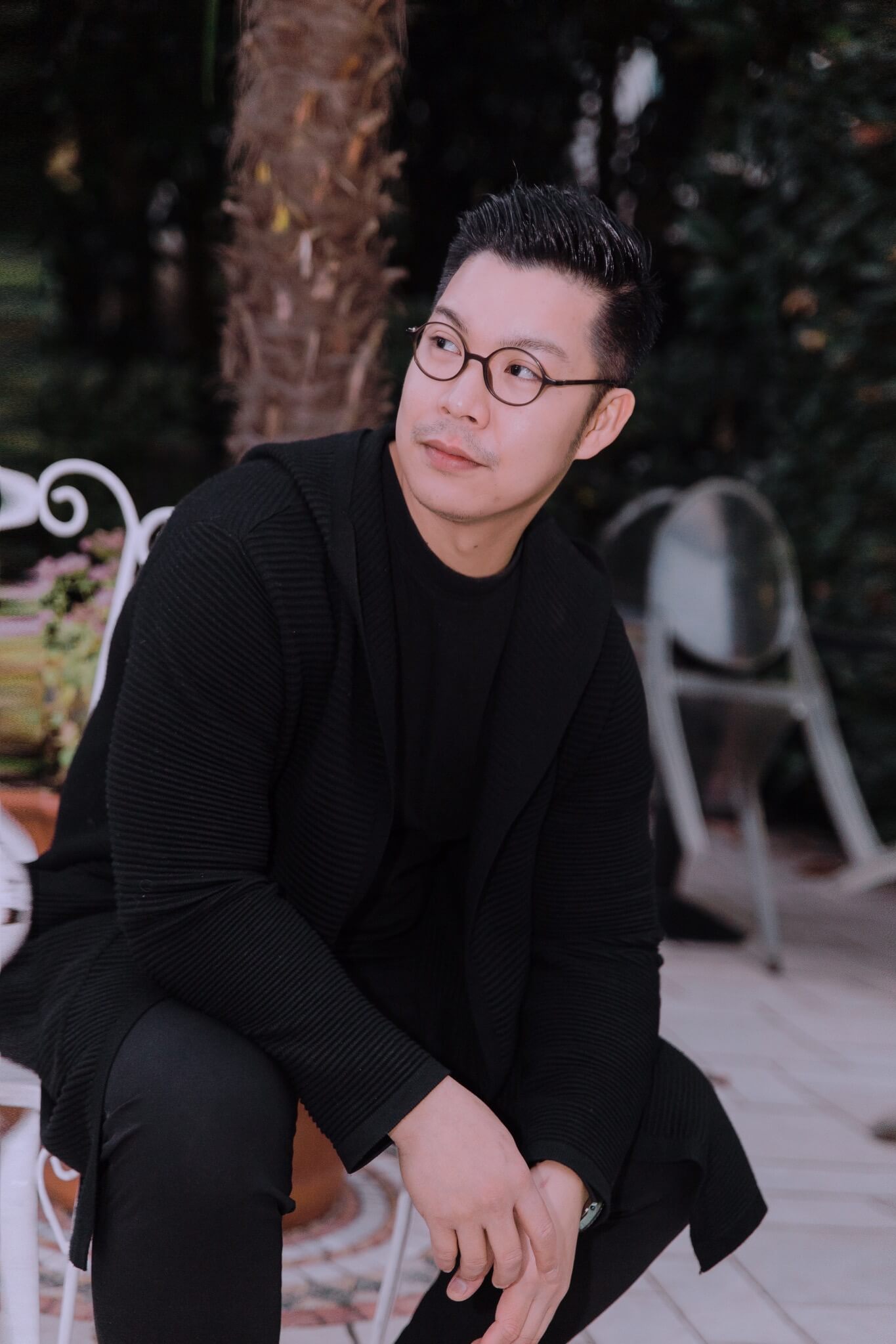
“Usually I get asked why I waste time being just a receptionist when I can get a better job but I’m happy with what I do.” Source: Lionell Christian Lanuzo
Do you have any useful tips for international students to budget their finances wisely in Europe?
First, find a place to stay. Rooms, dorms provided by unis or governments are usually inexpensive. Get to know your whereabouts like where the nearest supermarket and laundry stores are. Ask around for restaurants that serve authentic Italian food but that are cheap.
Usually, during Tuesdays and Saturdays, there are markets where you can buy anything way cheaper than supermarkets. Get a monthly ticket for public transport (about 30 euros for students) which will be hugely beneficial for your wallet especially when going around the city.








